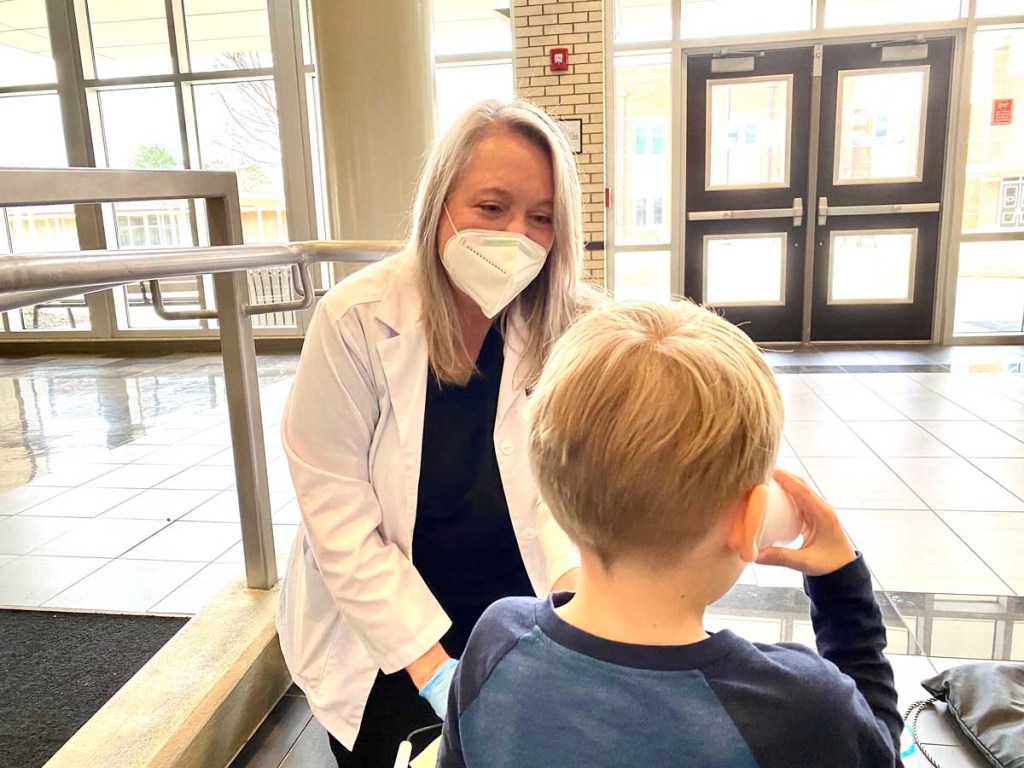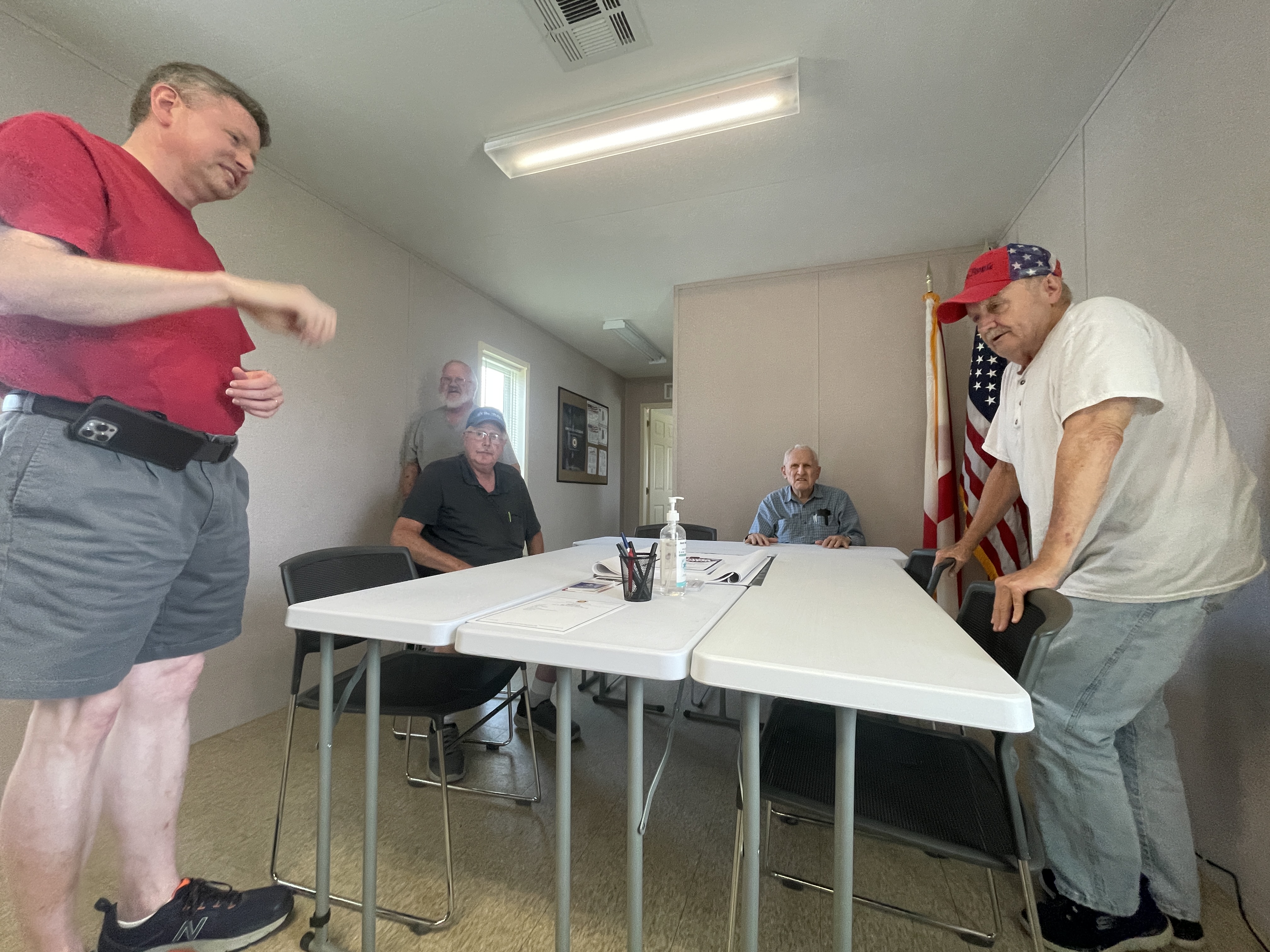‘We can see some light at the end of the tunnel’
Published 9:58 am Sunday, February 27, 2022

- Jennifer Shugarts treats a primary school student's nosebleed.
The past two years have been especially challenging for local schools, and no one at Cullman High School has been closer to the epicenter of the local preparedness response to COVID-19 than Jennifer Shugarts.
“It was huge for all of our nurses — it really changed our day; our job,” says Shugarts, the school nurse at CHS and lead nurse for the entire city school system. “Especially at the beginning, we were a bit overwhelmed with trying to figure out state guidelines, which were always changing.
“We had to stay on top of the latest information and ensure it was being put into practice, while playing the on-campus role of trying to keep everybody safe and do our best to keep kids in school — at least the ones, at the time, who were coming to school. I can proudly say it is better now. Our kids have had a regular school year this year, and we can see some light at the end of the tunnel.”
That’s a relief in ways both big and small for Shugarts, herself a former CHS student and a mom to four sons — all of whom have graduated from Cullman as well. There’s an ebb and flow to the school year that Shugarts says she treasures, and she’s grateful that the disruptions of the past two years appear to be behind local students.
“There’s an energy to being around a high school environment. It’s exciting and fun,” she explains. “Things are always happening. Even right now: Our basketball team, for the first time in 90 years, just made it to the state final four. The changing of the seasons, from football to basketball to soccer to baseball, and then the start of the school year — it’s fun to get to see and be a part of an active environment where there’s always something going on.”
A registered nurse who obtained her BSN just up the road at UAH, Shugarts is entering her 18th year in the profession — the past five at CHS. School nurses, she says, work in a unique setting that differs vastly from the clinical environment of hospitals, physicians’ offices, care facilities, and outpatient centers.
“The interesting thing about school nursing is that we don’t have doctors who directly oversee us. We’re very autonomous, and we have to make a lot of decisions within a pretty limited framework. We can’t diagnose, and we can’t do invasive procedures without paperwork from a doctor. Yet we still do have to make a lot of decisions on our own.”
School nurses see their share of walk-ins, but they definitely don’t just sit and wait for an ailing student to come through the door. Shugarts’ role as the school system’s lead nurse brings an additional administrative component to her work, and there’s plenty of that, just on the CHS campus, to attend to in the first place — even if she weren’t coordinating nursing staff activity for each of the system’s five schools.
“We do see walk-ins, yes, but we also have a lot of students who come in daily for scheduled visits,” she explains. “Students who are diabetic, or have chronic health conditions, or take daily medicine all have to continue doing that during school hours. We develop chronic health care plans for the teachers to help them accommodate those kids in their classrooms. We also check for scoliosis, and we do vision and hearing screenings if a student has been identified as being eligible for those at school.”
The COVID-19 pandemic affected Shugarts personally, and she’s seen firsthand the toll it can take on a loved one. “I almost lost my father,” she says. “My dad is a COVID survivor. He was in the hospital for five months, and on a ventilator for three of those. He’s home now and doing great, but it changed him. But it affect me, and so I’ve remained very cautious about trying to make sure that students have been safe in our schools.”
The pandemic has taken a different kind of toll, she says, on students — the kind that can affect everyone, even if they’ve never contracted the illness.
“Kids have different issues than the ones we might have had growing up,” she says. “After COVID, anxiety and mental health just went like ‘this’ [she signals an explosion with a hand gesture]. It has become a huge problem in a short time. As the nurses, we usually see kids kind of at the start of that as it comes to the surface — when they come in anxious or crying or with an upset stomach — and we have to figure out how to get them to the right people. One thing I’ve learned from the past two years is that kids definitely need this environment. They need to be at school.”
Shugarts freely admits that school is where she belongs, too. “My job is rewarding. I love it here. All of our nurses, as well as the substitute nurse who comes here and assists me, are wonderful people who want to be at their jobs,” she says. “We have great support from a great system. Everyone loves what they do, and they’re committed. They love the kids, and I do, too. There’s nowhere else I’d rather be.”





